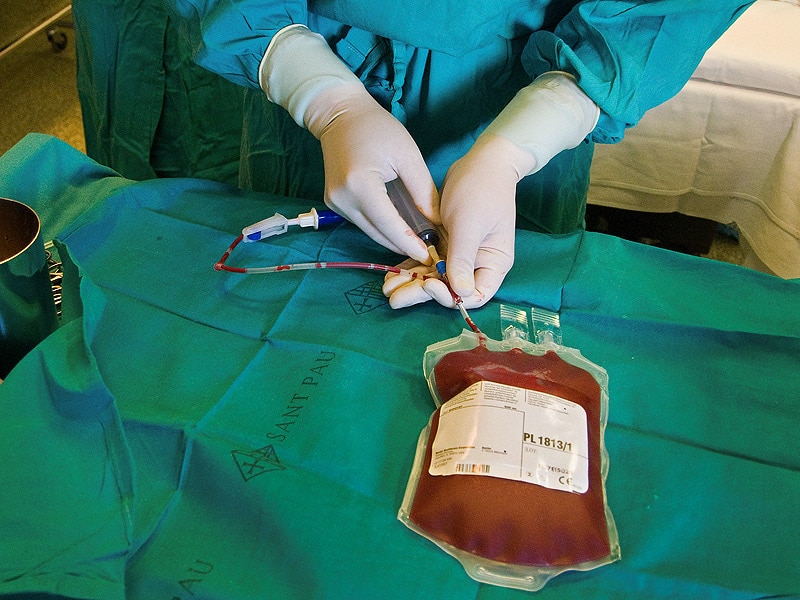Interesting conclusions. I was an EDSS 5.5 when I officially entered the HALT-MS study in February of 2010 and was transplanted in March. But I was just a 3.5 or 4.0 when I applied six months earlier in August of 2009. I could still walk 500 meters at the time, although since May of 2009 I knew something was already up with my disease, as I needed a cane for long walks around that time. By mid summer, I felt my disability was increasing monthly, with or without relapses, hence the reason I went for the biggest gun available and applied for the clinical trial.
In retrospect I was in all likelihood transitioning to SPMS. According to this new research, that's almost certainly the reason my gains from the transplant didn't hold up long term. And why I would not be an ideal candidate for another transplant now, even though it could still help.
Note, the full article is currently available to read for free. - D
Autologous hematopoietic stem cell transplantation in relapsing-remitting multiple sclerosis: comparison with secondary progressive multiple sclerosis
First Online: 10 April 2017
DOI: 10.1007/s10072-017-2933-6
Cite this article as:
Casanova, B., Jarque, I., Gasc�n, F. et al. Neurol Sci (2017). doi:10.1007/s10072-017-2933-6
Abstract
The main objective of our work is to describe the long-term results of myeloablative autologous hematopoietic stem cell transplant (AHSCT) in multiple sclerosis patients. Patients that failed to conventional therapies for multiple sclerosis (MS) underwent an approved protocol for AHSCT, which consisted of peripheral blood stem cell mobilization with cyclophosphamide and granulocyte colony-stimulating factor (G-CSF), followed by a conditioning regimen of BCNU, Etoposide, Ara-C, Melphalan IV, plus Rabbit Thymoglobulin.
Thirty-eight MS patients have been transplanted since 1999. Thirty-one patients have been followed for more than 2*years (mean 8.4*years). There were 22 relapsing-remitting multiple sclerosis (RRMS) patients and 9 secondary progressive multiple sclerosis (SPMS) patients. No death related to AHSCT. A total of 10 patients (32.3%) had at least one relapse during post-AHSCT evolution, 6 patients in the RRMS group (27.2%) and 4 in the SPMS group (44.4%). After AHSCT, 7 patients (22.6%) experienced progression of disability, all within SP form. By contrast, no patients with RRMS experienced worsening of disability after a median follow-up of 5.4*years, 60% of them showed a sustained reduction in disability (SRD), defined as the improvement of 1.0 point in the expanded disability status scale (EDSS) sustains for 6*months (0.5 in cases of EDSS*≥*5.5).
The only clinical variable that predicted a poor response to AHSCT was a high EDSS in the year before transplant. AHSCT using the BEAM-ATG scheme is safe and efficacious to control the aggressive forms of RRMS.
FULL ARTICLE: https://link.springer.com/article/10...072-017-2933-6

In retrospect I was in all likelihood transitioning to SPMS. According to this new research, that's almost certainly the reason my gains from the transplant didn't hold up long term. And why I would not be an ideal candidate for another transplant now, even though it could still help.
Note, the full article is currently available to read for free. - D
Autologous hematopoietic stem cell transplantation in relapsing-remitting multiple sclerosis: comparison with secondary progressive multiple sclerosis
First Online: 10 April 2017
DOI: 10.1007/s10072-017-2933-6
Cite this article as:
Casanova, B., Jarque, I., Gasc�n, F. et al. Neurol Sci (2017). doi:10.1007/s10072-017-2933-6
Abstract
The main objective of our work is to describe the long-term results of myeloablative autologous hematopoietic stem cell transplant (AHSCT) in multiple sclerosis patients. Patients that failed to conventional therapies for multiple sclerosis (MS) underwent an approved protocol for AHSCT, which consisted of peripheral blood stem cell mobilization with cyclophosphamide and granulocyte colony-stimulating factor (G-CSF), followed by a conditioning regimen of BCNU, Etoposide, Ara-C, Melphalan IV, plus Rabbit Thymoglobulin.
Thirty-eight MS patients have been transplanted since 1999. Thirty-one patients have been followed for more than 2*years (mean 8.4*years). There were 22 relapsing-remitting multiple sclerosis (RRMS) patients and 9 secondary progressive multiple sclerosis (SPMS) patients. No death related to AHSCT. A total of 10 patients (32.3%) had at least one relapse during post-AHSCT evolution, 6 patients in the RRMS group (27.2%) and 4 in the SPMS group (44.4%). After AHSCT, 7 patients (22.6%) experienced progression of disability, all within SP form. By contrast, no patients with RRMS experienced worsening of disability after a median follow-up of 5.4*years, 60% of them showed a sustained reduction in disability (SRD), defined as the improvement of 1.0 point in the expanded disability status scale (EDSS) sustains for 6*months (0.5 in cases of EDSS*≥*5.5).
The only clinical variable that predicted a poor response to AHSCT was a high EDSS in the year before transplant. AHSCT using the BEAM-ATG scheme is safe and efficacious to control the aggressive forms of RRMS.
FULL ARTICLE: https://link.springer.com/article/10...072-017-2933-6
